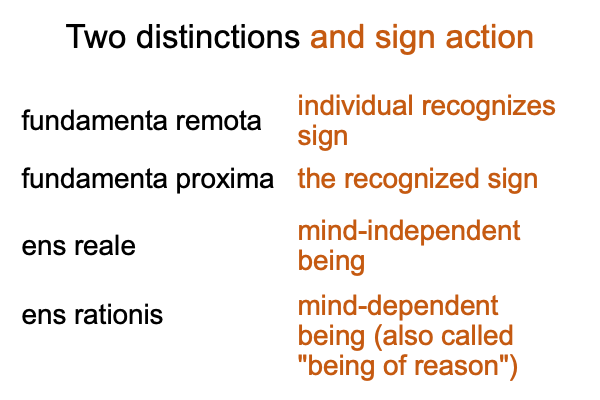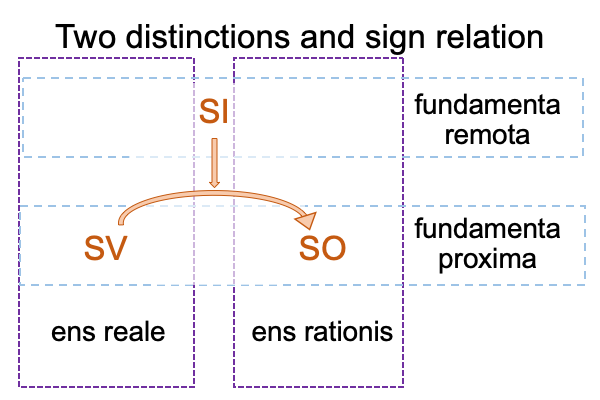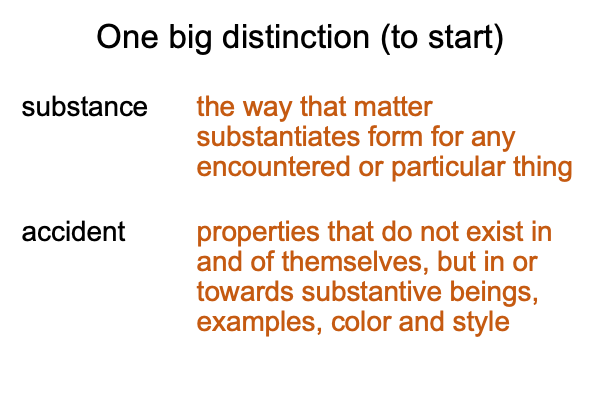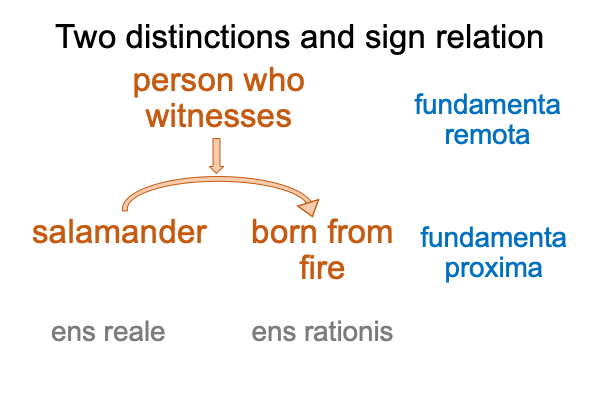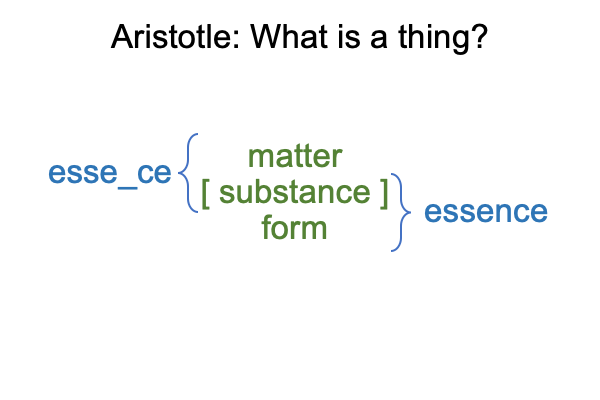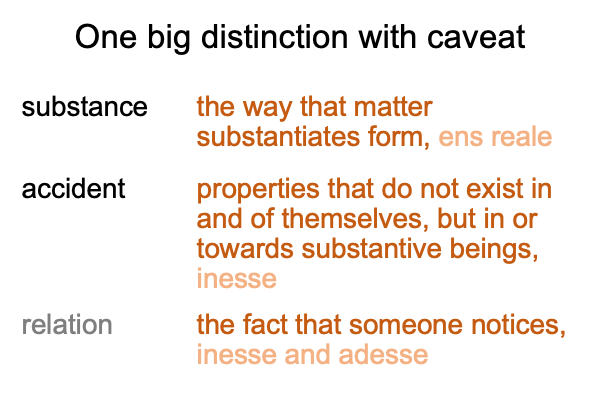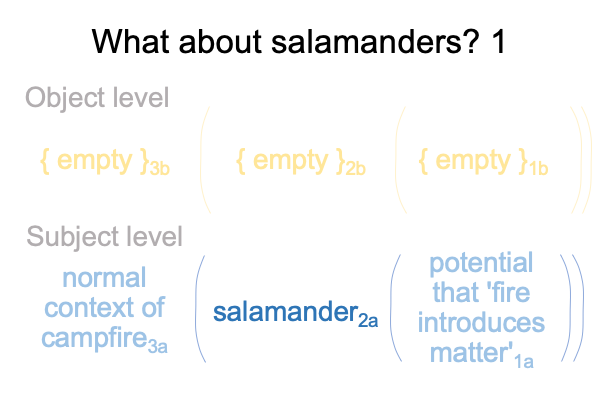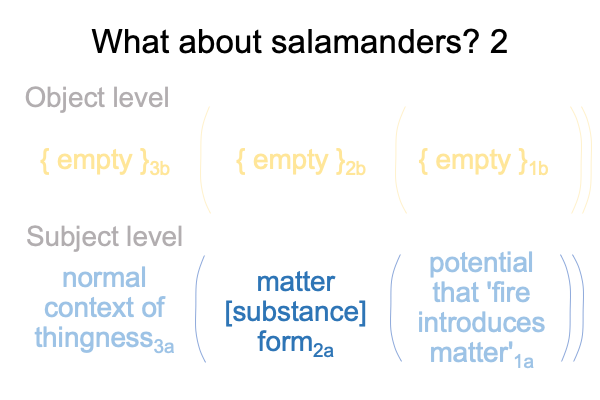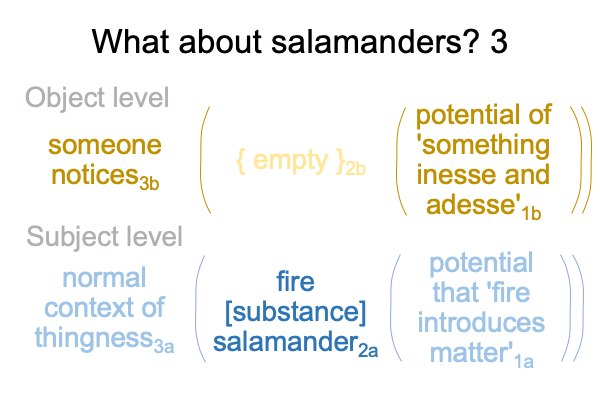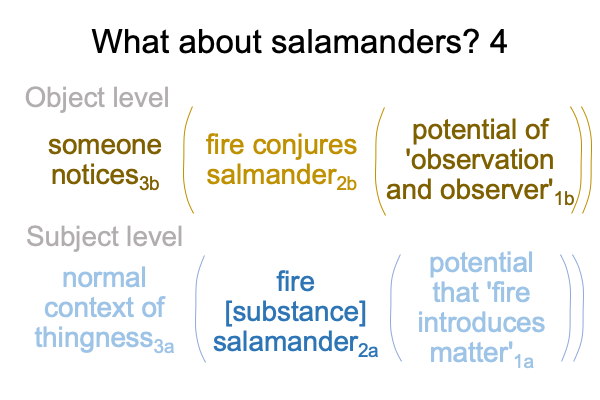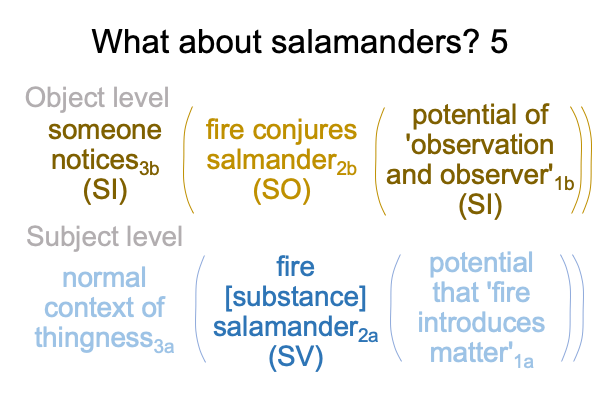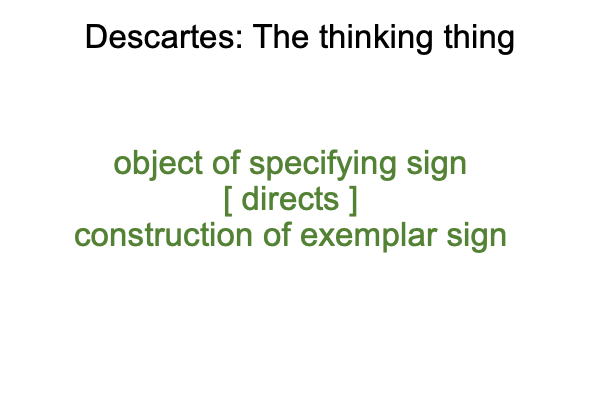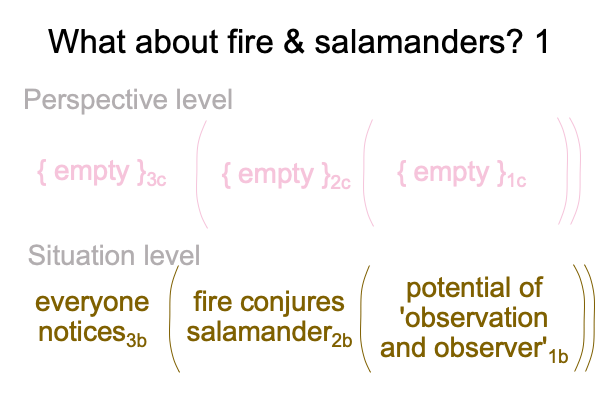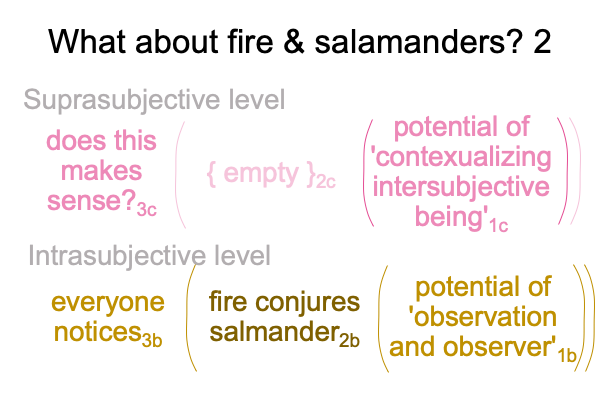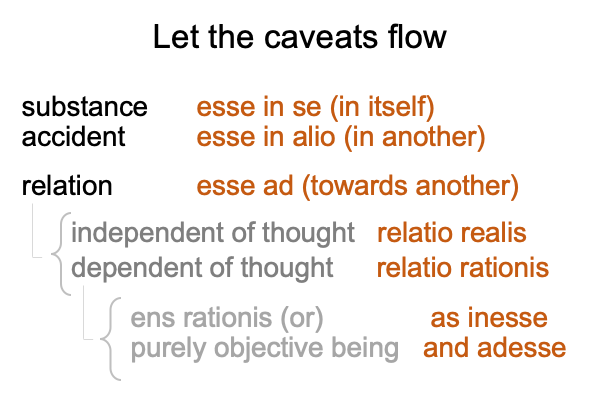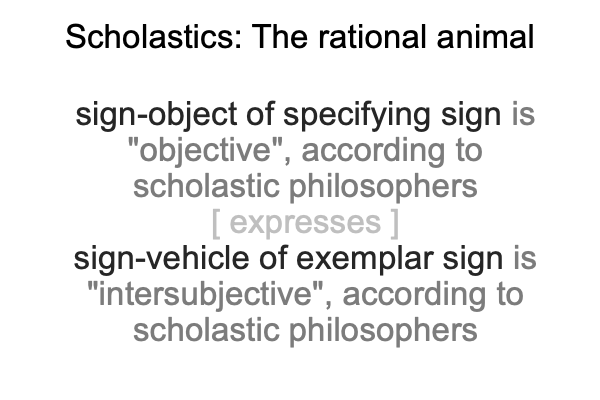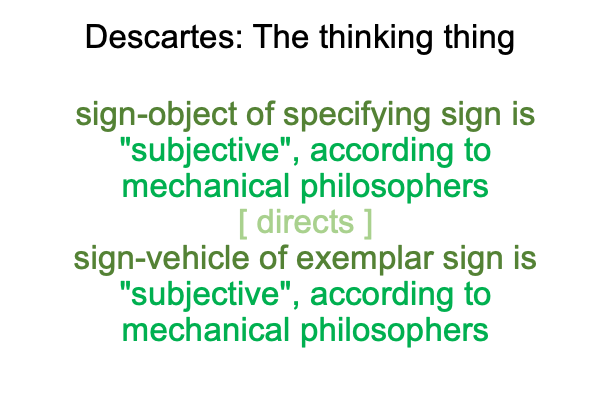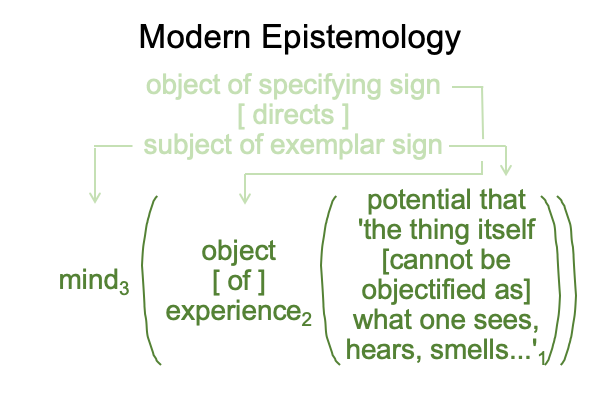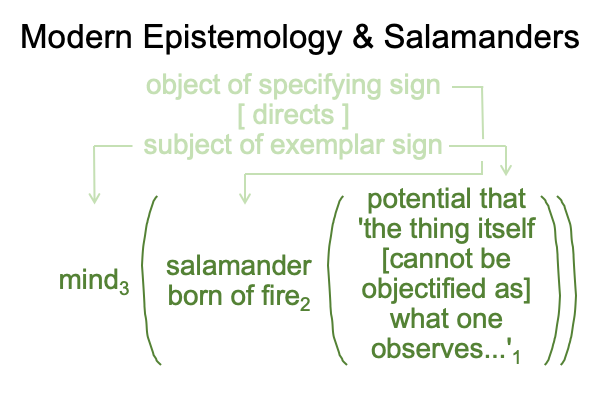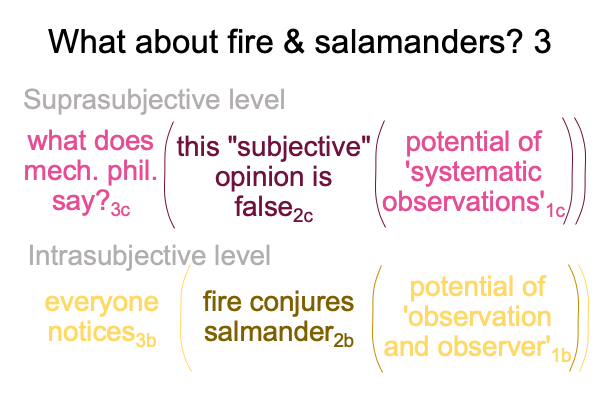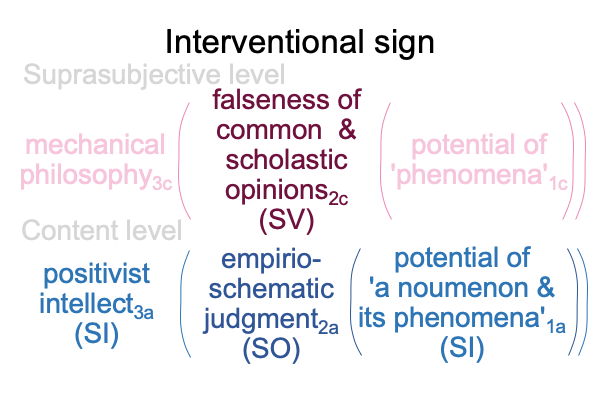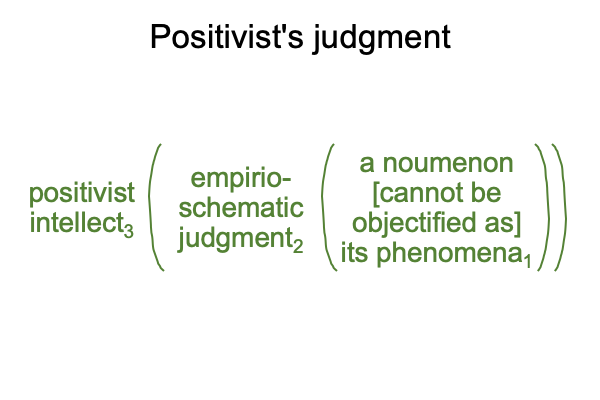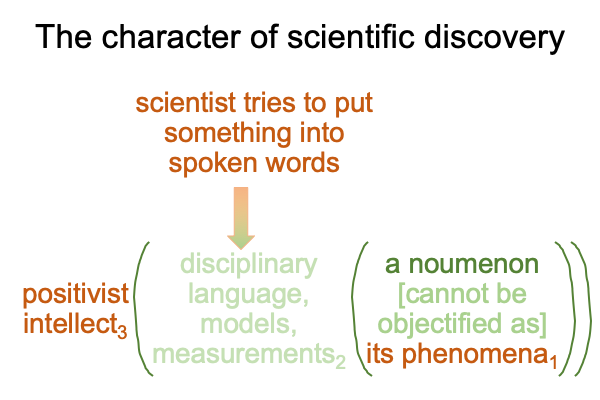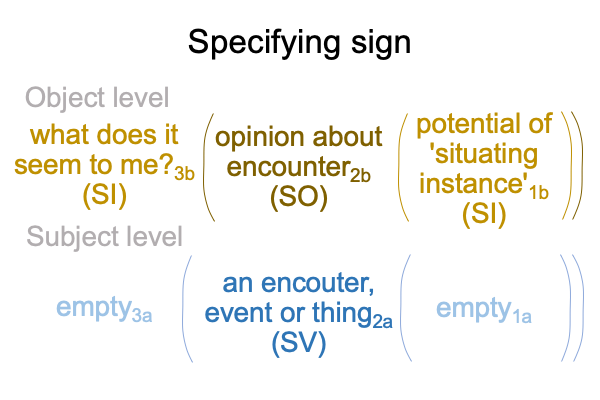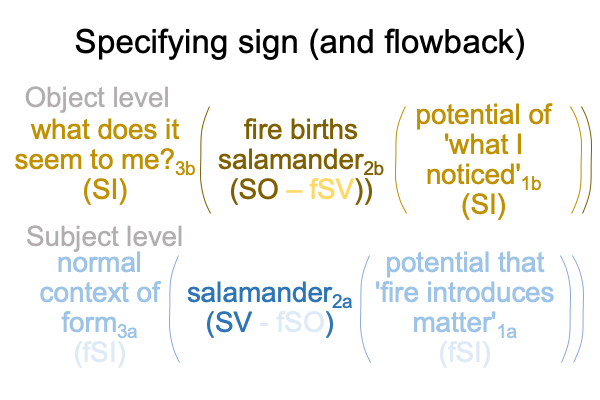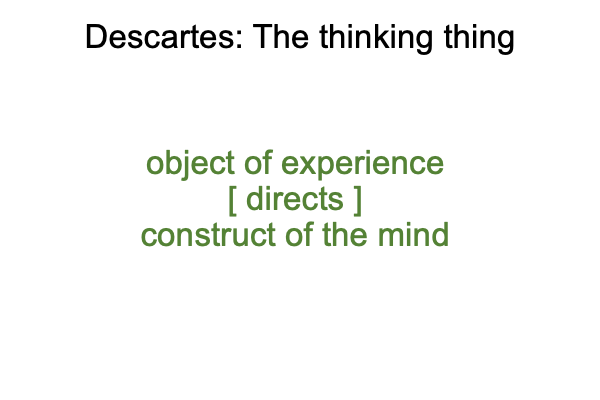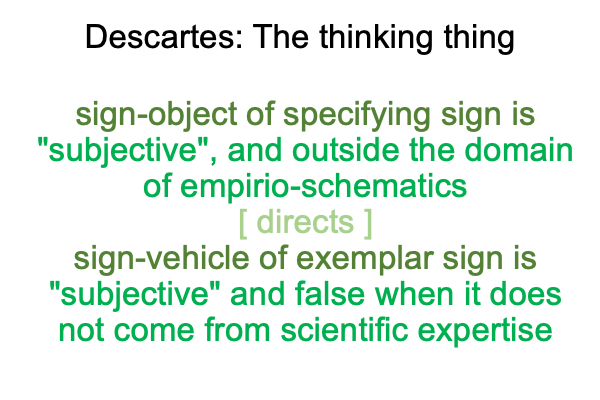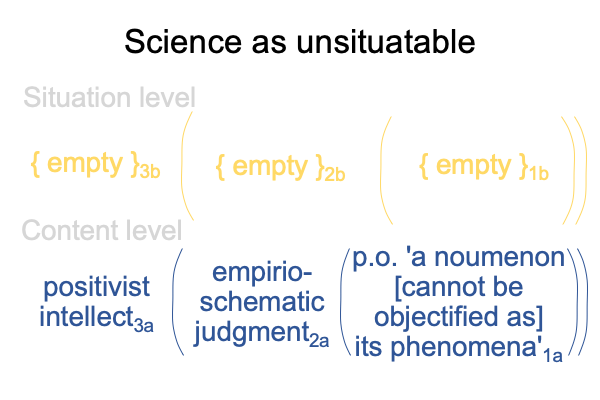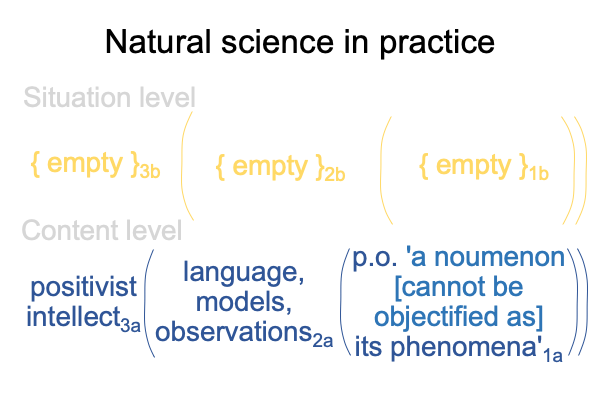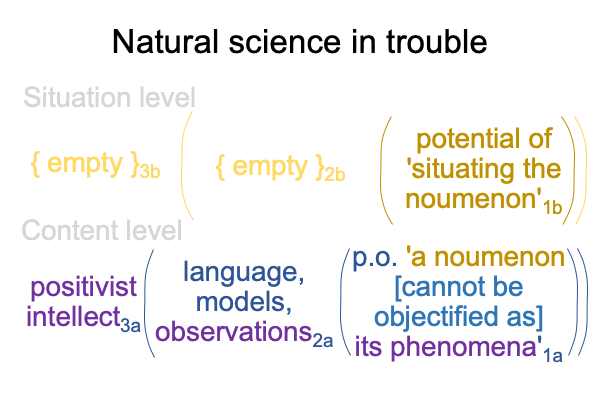Looking at John Deely’s Book (2010) “Semiotic Animal” (Part 11 of 22)
0082 Deely dies in 2017. The flock has no clue as to the implications.
The wool-clad wolves say, “Enough of this. We are weary of you encouraging this rag-tag flock of inquirers. We are going to turn semiotics into an academic discipline and a profession. In order to be a semiotician, certification will be required.”
0083 The specifying sign remains the same. Find an instance2a then explain that instance in terms of semiotics2b.
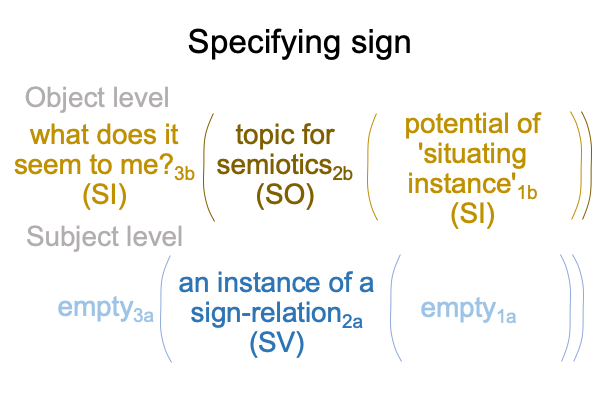
0084 The exemplar sign is where the teeth start to flash. Each topic for semiotics3b (SV) stands for an opportunity to develop disciplinary expertise2a (SO) in regards to the normal context of an academic establishment3c arising from the potential of ‘professionalism’1c (SI).
The inspiration is not to make a discovery. The ambition is to become professional.
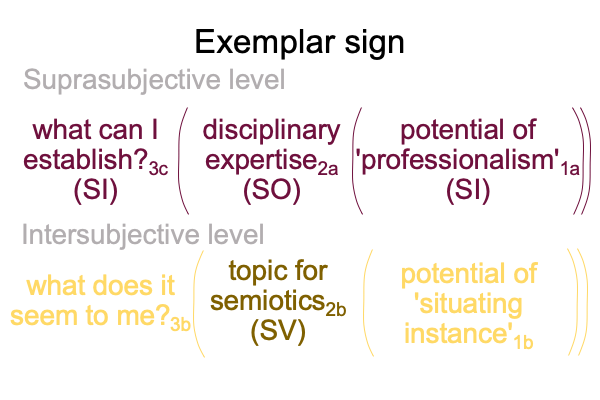
0085 The interventional sign produces an incredible oddity. Individual wolves are not sufficient. They must team up into a single three-headed creature, a Cerebus, so to speak, who guards the passage to the underworld of success in academics. One head is a gatekeeper. One head edits publications. One head hones the criteria for professional license.
The disciplinary language of semiotics2c (SV) stands for an opportunity to publish in a “reputable” journal2a (SO) in regards to the Cerebus3a guarding the professional “credentials” of those seeking publication1a (SI). Should only those with postgraduate degrees in the preferred fields and from the preferred schools submit to the premier journals?
I wonder.
0086 Here is a picture of the interventional sign.
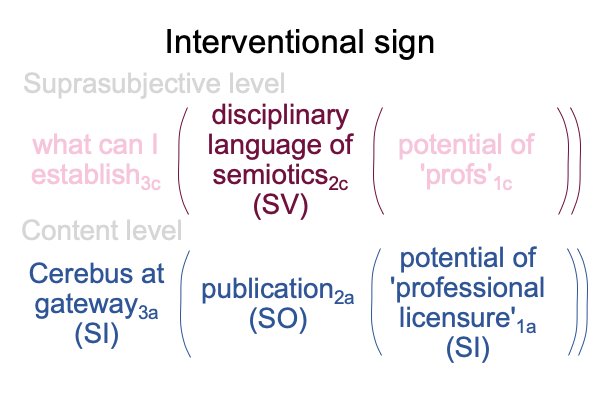
0087 The medieval scholastics identified the specifying and the exemplar signs. They may have grasped something like the interventional sign. But, the interventional sign becomes more and more apparent only recently, in the field of anthropology. The interventional sign may be a post-modern and a post-scholastic discovery that touches base first, with the field of anthropology, as noted in Comments on Sasha Newell’s Article (2018) “The Affectiveness of Symbols”, by Razie Mah, available at smashwords and other e-book venues.
0088 Deely does not mention this sign in any of his books.
Why?
He lives it.
Deely is a semiotic animal.

